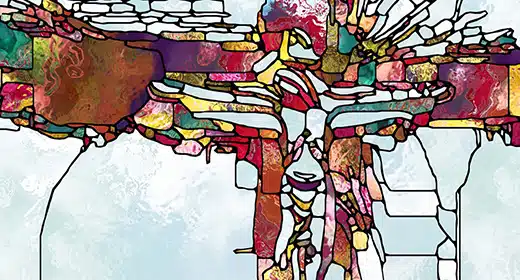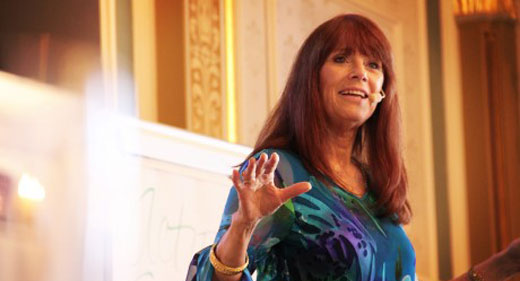by Jean Shinoda Bolen: Today, hundreds of thousands of women’s initiatives worldwide stabilize local economies, feed the poor, heal disease and make the world safer and less violent…

Psychiatrist Jean Shinoda Bolen tells us why and how in her new book, Artemis: The Indomitable Spirit in Everywoman, and in this three-session course, she’ll teach women to seize their own opportunities to make change.
[youtube]https://www.youtube.com/watch?v=LZkLoSUUlkc[/youtube]
The archetype of Artemis was liberated by the women’s movement, it is the archetype in women who are activists, entrepreneurs, feminists with an innate sense of social justice, equality with men, and sisterhood with women. Like Artemis the Goddess of the Hunt and Moon, this archetype enables women to focus on targets of their own choosing, to set goals for themselves, and go into new terrain. In families or cultures where girls and women are expected to be obedient or compliant, a wise and courageous inner child may become silent, kept alive in the imagination. The moon aspect is about the capacity for reflection and spirituality. The psychology of Artemis, Athena, Hestia, the virgin goddesses of Greek Mythology, is of “one-in-herself, an archetypal quality that remains untamed and unsubdued–indomitable no matter what happens to them.
In this three-part course, storytelling and meaning come together when Jungian analyst and author tells about Artemis the goddess, Atalanta the mortal, and examples of girls and women who drew upon these archetypal sources as a means for participants to see their own lives and the lives of others in this light. The realm of Artemis is the “Wilderness” as a place to find beauty and oneness with nature, and a metaphor for going into the unknown, the transition zones in our lives.
You can read the feature story containing Jean Shinoda Bolen’s ideas about how to play with the feminine archetypes in the spring issue of The Intelligent Optimist, on newsstands soon.
Or read excerpts here:
No longer about breaking the glass ceiling, third wave feminism is about bringing everyone along. The focus is not on one’s woman’s triumph and success but on global organizing and development. Think of these grass roots women’s movements as the human version of the Internet—the grapevine by which hopes and dreams go viral. Today, hundreds of thousands—maybe even more than a million—of small, local efforts, by, for and on behalf of women, allow us to stabilize local economies, feed the poor, deal with the devastating effects of war and disease, and make the world a safer place for all.
Psychiatrist and best selling author, Jean Shinoda Bolen calls this The Artemis Effect, after an ancient Greek goddess with a strong sense of sisterhood. Shown with her bow and arrow, and usually in the company of the forest nymphs, Artemis was a protector of women and young girls. As guardian of animals and the wilderness, she was also the first environmentalist.
In her new book, Artemis: The Indomitable Spirit in Everywoman, Bolen views Artemis as the prototype for the next wave of female activists. Artemis heroines have already captured the popular imagination, she notes, citing Disney’s bow-wielding princess Merida in Brave, Katniss Everdeen in The Hunger Games, and the fiery Danys in Game of Thrones.
***
As a psychiatrist, Bolen has spent years empowering women and listening to their stories. In her 1984 best seller, Goddesses in Everywoman, now in close to 100 translations, she explored a wide range of feminine archetypes found in Western mythology, showing how these energies are still active in a woman’s psyche. In Goddesses in Older Women, published in 2001, Bolen urged women over 50 to use their wisdom to give back and to mentor others. With her 2003 book, The Millionth Circle, she started a grass roots movement, calling on women to gather in sacred circles and support the causes dearest to their hearts. Now she is lobbying for a Fifth UN Congress on the Status of Women that she hopes will be on the docket by the end of 2015.
In the last two decades, grass roots women’s advocacy has been on the rise and there’s are now more women’s led NGOs (non-governmental organizations) than ever before. The grass roots phenomenon, however, is so broad and so new, that no agency has been tracking it. According to the Huairou Commission (named for the small village near Beijing that hosted the NGO Forum parallel to the last UN Women’s Conference in 1995), there are over 2,200 grass roots women’s organizations in Kenya, and over 100,000 in India. “There are now probably over a million worldwide,” says Huairou’s chair, Jan Peterson. “Officials have found it easy to support these organizations because they are concerned with practical issues like growing food and building houses.”
In an age where we have so many predictors of impending disaster (wars, earthquakes and tsunamis), grass roots women’s movements have become on-the-ground-indicators of impending good. They have been responsible for general prosperity, better food and housing, better health care and education, improved communication between men and women, and a more stable family life.
“This is the beauty of the Artemis Effect,” says Bolen, “One study shows that there is no better indicator for a country’s general well being than a strong grass roots women’s movement—no other factors have such a great effect on overall quality of life.” The OECD Gender, Institutions and Development Database supports this, noting that “With few exceptions, the greater the power of women, the greater the country’s economic success.”
What you’ll take from this course:
* A feeling of solidarity with the mythical archetypes representing different elements of the feminine
* A greater ability to see your purpose and put it into practice
* Tools to navigate transition








































